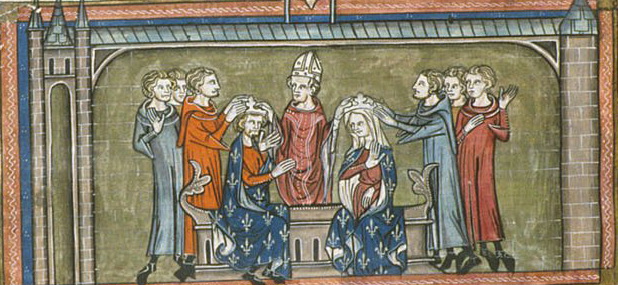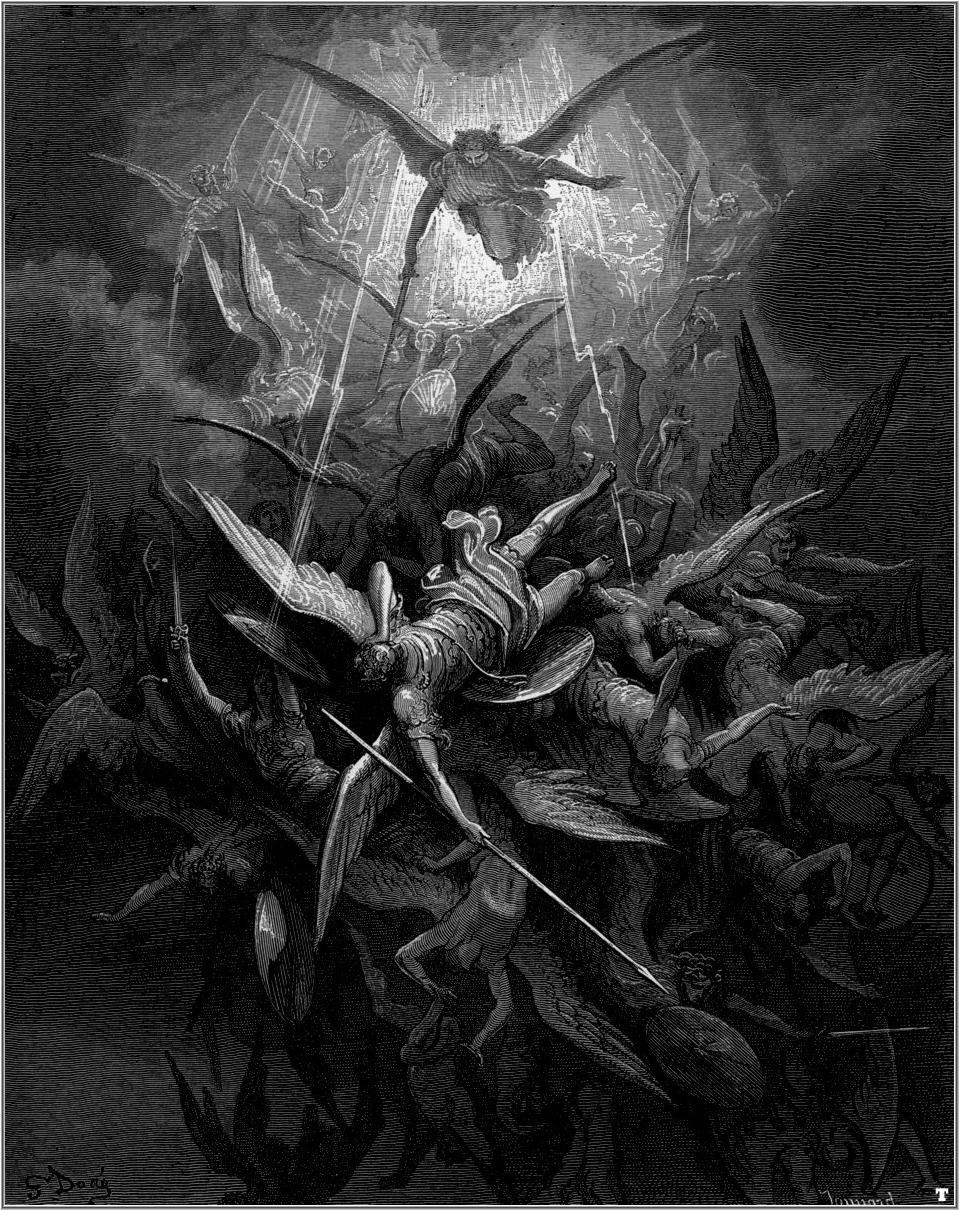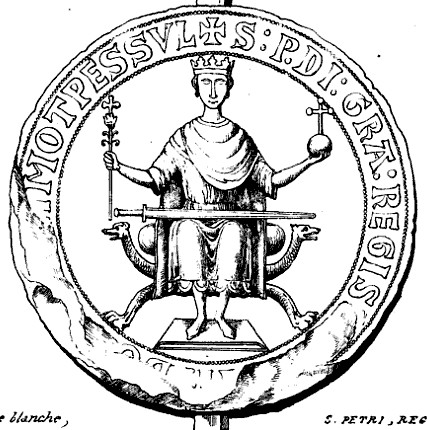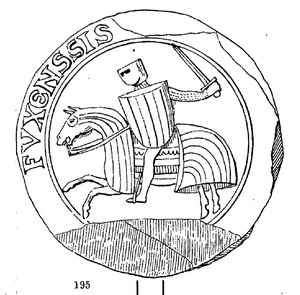|
Cathar Crusade
The Albigensian Crusade (), also known as the Cathar Crusade (1209–1229), was a military and ideological campaign initiated by Pope Innocent III to eliminate Catharism in Languedoc, what is now southern France. The Crusade was prosecuted primarily by the French crown and promptly took on a political aspect. It resulted in the significant reduction of practicing Cathars and a realignment of the County of Toulouse with the French crown. The distinct regional culture of Languedoc was also diminished. The Cathars originated from an anti-materialist reform movement within the Bogomil churches of the Balkans calling for what they saw as a return to the Christian message of perfection, poverty and preaching, combined with a rejection of the physical. The reforms were a reaction against the often perceived scandalous and dissolute lifestyles of the Catholic clergy. Their theology, Gnostic in many ways, was basically dualist. Several of their practices, especially their belief in th ... [...More Info...] [...Related Items...] OR: [Wikipedia] [Google] [Baidu] |
Crusades
The Crusades were a series of religious wars initiated, supported, and at times directed by the Papacy during the Middle Ages. The most prominent of these were the campaigns to the Holy Land aimed at reclaiming Jerusalem and its surrounding territories from Muslim rule. Beginning with the First Crusade, which culminated in the Siege of Jerusalem (1099), capture of Jerusalem in 1099, these expeditions spanned centuries and became a central aspect of European political, religious, and military history. In 1095, after a Byzantine request for aid,Helen J. Nicholson, ''The Crusades'', (Greenwood Publishing, 2004), 6. Pope Urban II proclaimed the first expedition at the Council of Clermont. He encouraged military support for List of Byzantine emperors, Byzantine emperor Alexios I Komnenos, AlexiosI Komnenos and called for an armed pilgrimage to Jerusalem. Across all social strata in Western Europe, there was an enthusiastic response. Participants came from all over Europe and had a ... [...More Info...] [...Related Items...] OR: [Wikipedia] [Google] [Baidu] |
Louis VIII Of France
Louis VIII (5 September 1187 8 November 1226), nicknamed The Lion (), was King of France from 1223 to 1226. As a prince, he invaded Kingdom of England, England on 21 May 1216 and was Excommunication in the Catholic Church, excommunicated by a papal legate on 29 May 1216. On 2 June 1216, Louis was proclaimed "King of England" by rebellious barons in London, though never crowned. With the assistance of allies in England and Scotland he gained control of approximately one third of the English kingdom and part of Southern Wales. He was eventually defeated by English loyalists and those barons who swapped sides following the death of King John of England, King John. After the Treaty of Lambeth, he was paid 10,000 mark (currency), marks, pledged never to invade England again, and was absolved of his excommunication. As prince and fulfilling his father's crusading vow, Louis led forces during the Albigensian Crusade in support of Simon de Montfort, 5th Earl of Leicester, Simon de Mo ... [...More Info...] [...Related Items...] OR: [Wikipedia] [Google] [Baidu] |
Balkans
The Balkans ( , ), corresponding partially with the Balkan Peninsula, is a geographical area in southeastern Europe with various geographical and historical definitions. The region takes its name from the Balkan Mountains that stretch throughout the whole of Bulgaria. The Balkan Peninsula is bordered by the Adriatic Sea in the northwest, the Ionian Sea in the southwest, the Aegean Sea in the south, the Turkish straits in the east, and the Black Sea in the northeast. The northern border of the peninsula is variously defined. The highest point of the Balkans is Musala, , in the Rila mountain range, Bulgaria. The concept of the Balkan Peninsula was created by the German geographer August Zeune in 1808, who mistakenly considered the Balkan Mountains the dominant mountain system of southeastern Europe spanning from the Adriatic Sea to the Black Sea. In the 19th century the term ''Balkan Peninsula'' was a synonym for Rumelia, the parts of Europe that were provinces of the Ottoman E ... [...More Info...] [...Related Items...] OR: [Wikipedia] [Google] [Baidu] |
Bogomil
Bogomilism (; ; sh-Latn-Cyrl, separator=" / ", bogumilstvo, богумилство) was a Christian neo-Gnostic, dualist sect founded in the First Bulgarian Empire by the priest Bogomil during the reign of Tsar Peter I in the 10th century. It most probably arose in the region of Kutmichevitsa, today part of the region of Macedonia. The Bogomils were dualists or Gnostics in that they believed in a world within the body and a world outside the body. They did not use the Christian cross, nor build churches, as they revered their gifted form and considered their body to be the temple. This gave rise to many forms of practice to cleanse oneself through fasting or dancing. The Bogomils rejected the ecclesiastical hierarchy. Their primary political tendencies were resistance to the state and church authorities. This helped the movement spread quickly in the Balkans, gradually expanding throughout the Byzantine Empire and later reaching Kievan Rus', Dalmatia, Serbia, Bosnia, Ita ... [...More Info...] [...Related Items...] OR: [Wikipedia] [Google] [Baidu] |
Southern France
Southern France, also known as the south of France or colloquially in French as , is a geographical area consisting of the regions of France that border the Atlantic Ocean south of the Marais Poitevin,Louis Papy, ''Le midi atlantique'', Atlas et géographie de la France moderne, Flammarion, Paris, 1984. Spain, the Mediterranean Sea and Italy. It includes southern Nouvelle-Aquitaine in the west, Occitania in the centre, the southern parts of Auvergne-Rhône-Alpes in the northeast, Provence-Alpes-Côte d'Azur in the southeast, as well as the island of Corsica in the southeast. Southern France is generally considered part of southern Europe because of its association with the Mediterranean Sea. The colloquial French name for the region, ''le Midi'', is derived from an Old French compound composed of ''mi'' ("middle") and ''di'' ("day"), meaning literally "midday". Thus, the term is comparable in both origin and meaning to , which to indicates southern Italy, and Romanian whic ... [...More Info...] [...Related Items...] OR: [Wikipedia] [Google] [Baidu] |
Catharism
Catharism ( ; from the , "the pure ones") was a Christian quasi- dualist and pseudo-Gnostic movement which thrived in Southern Europe, particularly in northern Italy and southern France, between the 12th and 14th centuries. Denounced as a heretical sect by the Catholic Church, its followers were attacked first by the Albigensian Crusade and later by the Medieval Inquisition, which eradicated the sect by 1350. Around 1 million were slaughtered, hanged, or burnt at the stake. Followers were known as Cathars or Albigensians, after the French city Albi where the movement first took hold, but referred to themselves as Good Christians. They famously believed that there were not one, but two Godsthe good God of Heaven and the evil god of this age (). According to tradition, Cathars believed that the good God was the God of the New Testament faith and creator of the spiritual realm. Many Cathars identified the evil god as Satan, the master of the physical world. The Cathars believe ... [...More Info...] [...Related Items...] OR: [Wikipedia] [Google] [Baidu] |
Pope Innocent III
Pope Innocent III (; born Lotario dei Conti di Segni; 22 February 1161 – 16 July 1216) was head of the Catholic Church and ruler of the Papal States from 8 January 1198 until his death on 16 July 1216. Pope Innocent was one of the most powerful and influential of the medieval popes. He exerted a wide influence over the Christian states of Europe, claiming supremacy over all of Europe's kings. He was central in supporting the Catholic Church's reforms of ecclesiastical affairs through his decretals and the Fourth Lateran Council. This resulted in a considerable refinement of Western canon law. He is furthermore notable for using interdict and other censures to compel princes to obey his decisions, although these measures were not uniformly successful. Innocent greatly extended the scope of the Crusades, directing crusades against Muslim Iberia and the Holy Land as well as the Albigensian Crusade against the Cathars in southern France. He organized the Fourth Crusade of 1202&nd ... [...More Info...] [...Related Items...] OR: [Wikipedia] [Google] [Baidu] |
Raphael Lemkin
Raphael Lemkin (; 24 June 1900 – 28 August 1959) was a Polish lawyer who is known for coining the term "genocide" and for campaigning to establish the Genocide Convention, which legally defines the act. Following the German invasion of Poland in 1939, he fled the country and sought asylum in the United States, where he became an academic at Duke University and campaigned vigorously to raise international awareness of the atrocities that were being committed by the Axis powers across occupied Europe. It was amidst this environment of World War II that Lemkin coined the term "genocide" to describe Nazi Germany's extermination policy. As a young Jewish law student who was deeply conscious of antisemitism and the persecution of Jews, Lemkin learned about the Ottoman genocide of the Armenian people during World War I and was deeply disturbed by the absence of international provisions to charge and punish those who were responsible for organizing and executing it. In his view, the ... [...More Info...] [...Related Items...] OR: [Wikipedia] [Google] [Baidu] |
Genocide
Genocide is violence that targets individuals because of their membership of a group and aims at the destruction of a people. Raphael Lemkin, who first coined the term, defined genocide as "the destruction of a nation or of an ethnic group" by means such as "the disintegration of [its] political and social institutions, of [its] cultural genocide, culture, linguicide, language, national feelings, religious persecution, religion, and [its] economic existence". During the struggle to ratify the Genocide Convention, powerful countries restricted Lemkin's definition to exclude their own actions from being classified as genocide, ultimately limiting it to any of five "acts committed with intent to destroy, in whole or in part, a national, ethnical, racial or religious group". While there are many scholarly Genocide definitions, definitions of genocide, almost all international bodies of law officially adjudicate the crime of genocide pursuant to the Genocide Convention. Genocide has ... [...More Info...] [...Related Items...] OR: [Wikipedia] [Google] [Baidu] |
Cathar
Catharism ( ; from the , "the pure ones") was a Christian quasi- dualist and pseudo-Gnostic movement which thrived in Southern Europe, particularly in northern Italy and southern France, between the 12th and 14th centuries. Denounced as a heretical sect by the Catholic Church, its followers were attacked first by the Albigensian Crusade and later by the Medieval Inquisition, which eradicated the sect by 1350. Around 1 million were slaughtered, hanged, or burnt at the stake. Followers were known as Cathars or Albigensians, after the French city Albi where the movement first took hold, but referred to themselves as Good Christians. They famously believed that there were not one, but two Godsthe good God of Heaven and the evil god of this age (). According to tradition, Cathars believed that the good God was the God of the New Testament faith and creator of the spiritual realm. Many Cathars identified the evil god as Satan, the master of the physical world. The Cathars believe ... [...More Info...] [...Related Items...] OR: [Wikipedia] [Google] [Baidu] |
Peter II Of Aragon
Peter II the Catholic (; ) (July 1178 – 12 September 1213) was the King of Aragon and Count of Barcelona from 1196 to 1213. Background Peter was born in Huesca, the son of Alfonso II of Aragon and Sancha of Castile, Queen of Aragon, Sancha of Castile. In 1205 he acknowledged the feudal supremacy of the papacy and was crowned in Rome by Pope Innocent III, swearing to defend the Catholic Church, Catholic faith (hence his epithet, "the Catholic"). He was the first king of Aragon to be crowned by the pope. In the first decade of the thirteenth century Peter commissioned the ''Liber feudorum Ceritaniae'', an Illustrated manuscript, illustrated codex cartulary for the counties of County of Cerdagne, Cerdagne, County of Conflent, Conflent, and County of Roussillon, Roussillon. Marriage On 15 June 1204 Peter married (as her third husband) Marie of Montpellier, daughter and heiress of William VIII of Montpellier by Eudokia Komnene, wife of William VIII of Montpellier, Eudocia Comne ... [...More Info...] [...Related Items...] OR: [Wikipedia] [Google] [Baidu] |
Roger-Bernard II Of Foix
Roger Bernard II (c. 1195 – 26 May 1241), called the Great, was the seventh count of Foix from 1223 until his death. He was the son and successor of the count Raymond-Roger and his wife Philippa of Montcada. Life In 1208, Roger-Bernard married Ermesinde, daughter and heir of Arnau de Castellbò, viscountess of Castellbò and a Cathar. By his wife, he had a son, Roger IV of Foix, and a daughter, Cecilia of Foix. Cecilia of Foix married Álvaro, Count of Urgell. When his relations with his French sovereign allowed it, he concentrated on expansion and fortification southwards. He fortified the towns guarding the way to Andorra and Urgel, and fell into conflict with the bishop of Urgel over the valley of Caboet in May 1233. He opposed the Inquisition and got into even more conflict with the bishop in April 1239. He did not involve himself in the war of Raymond Trencavel, though he did negotiate an honourable treaty in 1240. Albigensian crusade He made his name famous i ... [...More Info...] [...Related Items...] OR: [Wikipedia] [Google] [Baidu] |










